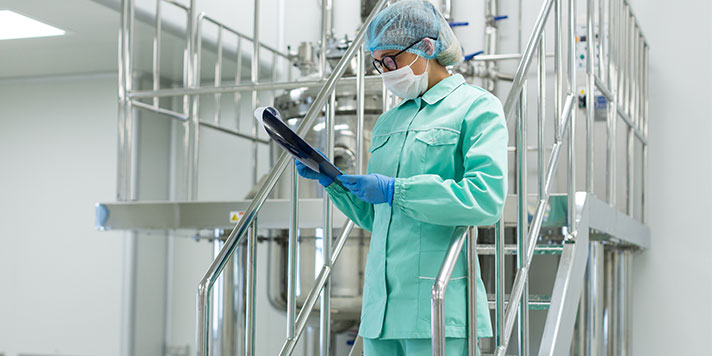When operating in a cleanroom, it is important to keep the environment safe and operational at all times. When a critical environment experiences contamination or fails FDA inspections, the room can be temporarily shut down, costing your company valuable time and resources. Here are five ways to prevent costly cleanroom downtime.
There are four sources of contamination that can upset the balance in a cleanroom:
- Environment
- Process
- Tools
- People
It’s a Dirty Job
You can’t always see it, but all work is a dirt-producing process. Contaminates abound! Any movement from walking to lifting to vacuuming or even wiping down workstations can create particles. Even tools and equipment can produce organic contaminants.
Maintenance workers must understand the cleaning process for any item brought into the cleanroom. Even “clean” products bound for use in a cleanroom must be washed with deionized (DI) water and special surfactants before entering a cleanroom. Seemingly clean (no visible dirt or grease) tools brought into the cleanroom must be treated with non-shedding cleanroom wipes and isopropyl alcohol.
Five Ways to Prevent Cleanroom Downtime
Cleanroom downtime can be quite costly. Here are five things you can do to make sure and avoid those pricey interruptions:
1- Train Your Staff. Anyone who might enter the cleanroom should not only understand the importance of proper cleanroom protocol; they need to adhere to proper gowning procedures, even if it’s just for a “quick trip” to retrieve a forgotten tool. Something so seemingly innocuous can release millions of particles requiring immediate full-scale cleaning and creating the risk of a downgrade in cleanroom classification.
2- Cleanroom-Only Tools and Equipment. Keep one set of tools and test equipment strictly for us inside every critical environment. This saves time and avoids any problems of having to clean tools before bringing them into the cleanroom. Special furnishings, such as vacuums (which exhaust outside the cleanroom), notepads, and cleaning solutions designed specifically for cleanroom use, are made of non-shedding materials.
4- Keep a Healthy Supply of Cleanroom Vinyl Gloves on Hand. This is the least expensive preventative measure but can also create significant issues if a facility runs out of this critical piece. Making sure your facility is always properly stocked with vinyl gloves is the easiest task for reducing interruption to production and workflow.
5- Monitor outside service personnel. If vendors service cleanroom equipment, ensure they also follow proper gowning procedures. Never allow equipment repair manuals into the cleanroom that aren’t printed on cleanroom paper. Manuals for every piece of equipment should always be printed on cleanroom-specific paper and should remain in the cleanroom.
6- When outsourcing the cleaning of this critical environment, hire an outside agency specializing in critical environment cleaning. Cleanliness levels vary, but the greater the demand for cleanliness, the greater the job, and the more critical it is to partner with the right team. At Pegasus, we follow the International Organization for Standardization (ISO) guidelines, reflecting our commitment to continuous process improvements, such as ISO 9001:2015 certification.
Contact us today if you’re looking for more ways to keep your cleanroom clean!







